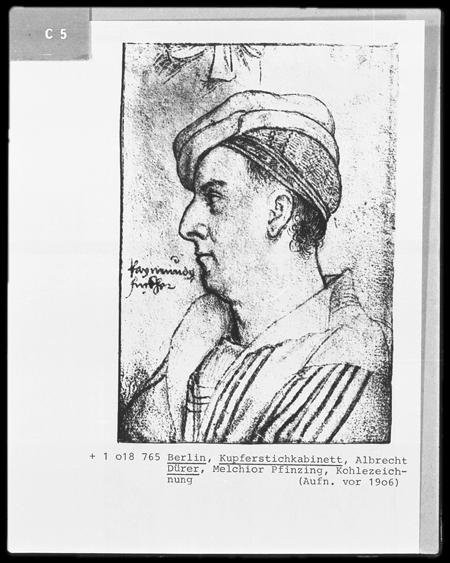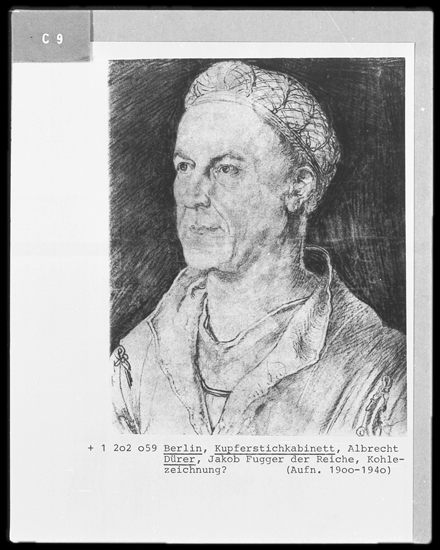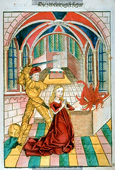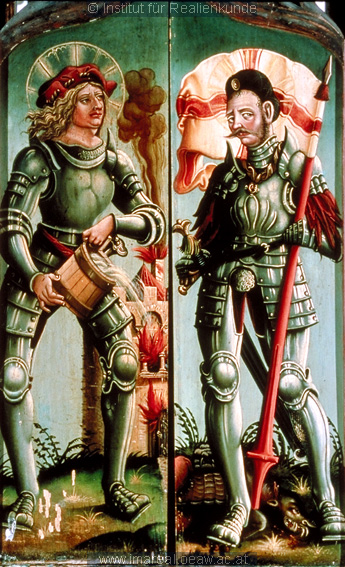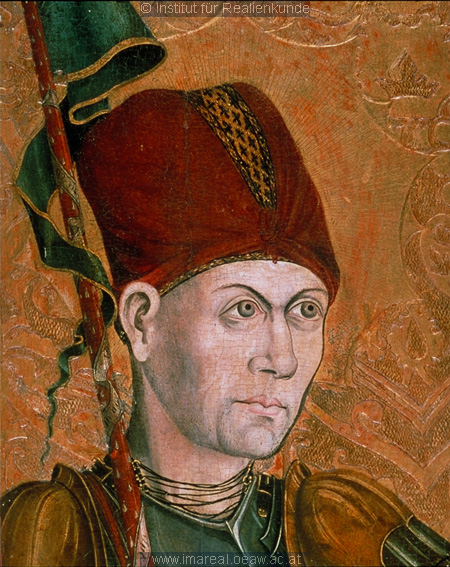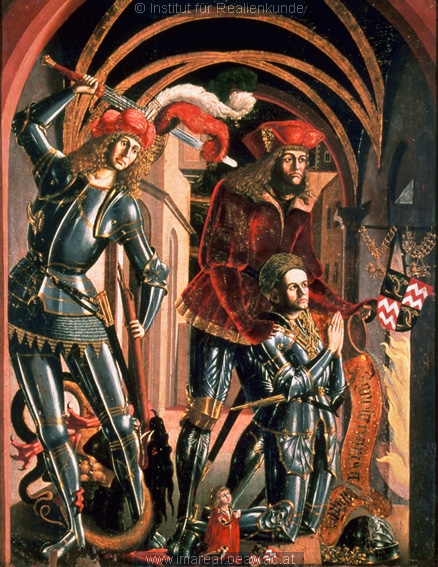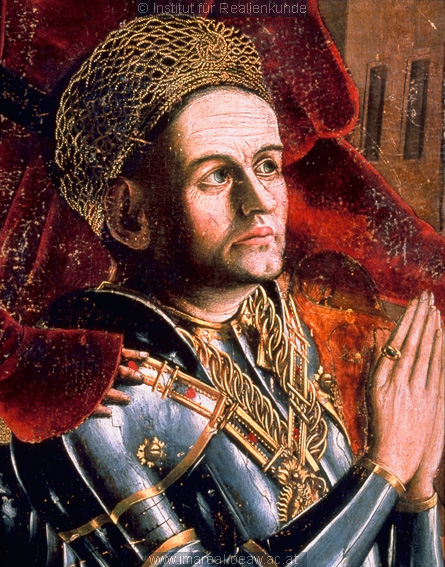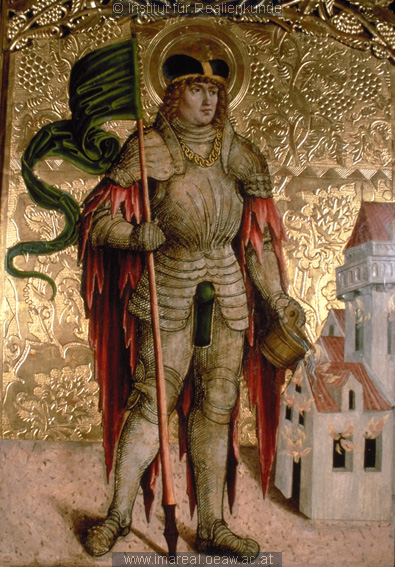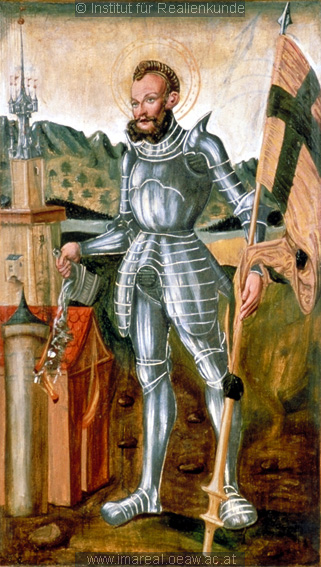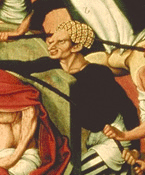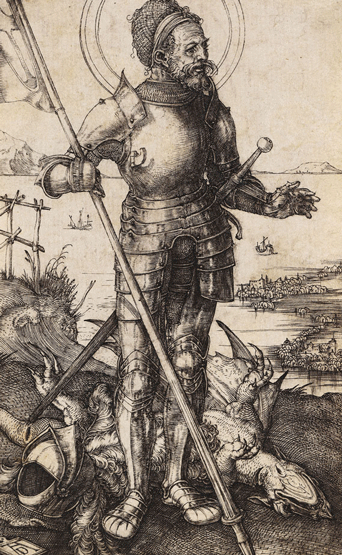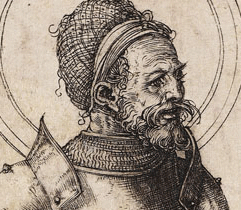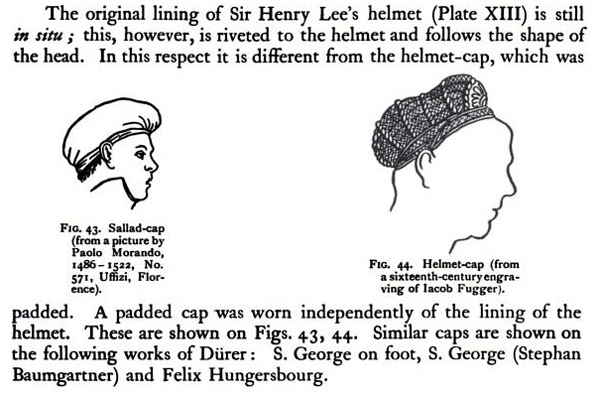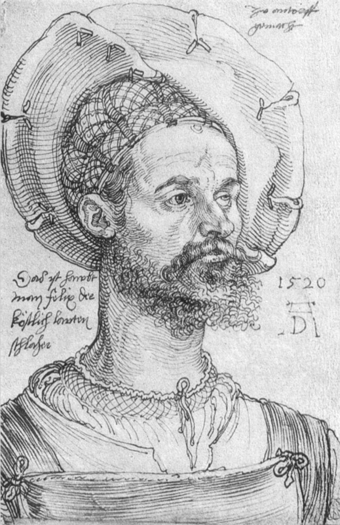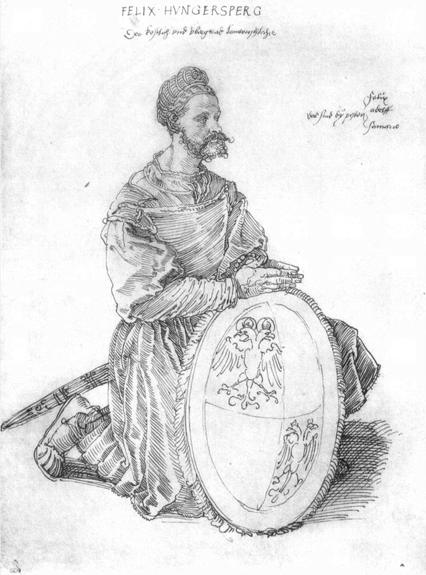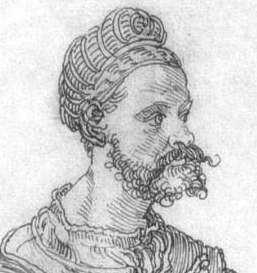I'd like to start a thread specifically for this, as I have't yet come across much discussion about it - either the historical practice, or people recreating / experimenting with it today.
So:
- Please post here any images you have of hair nets / cauls from this period.
- Feel free to also post any textual sources / quotes you know of.
- How might one go about reproducing these today? What construction does it look like they had? How would one ensure a snug fit (no elastic in the 15th C!) And so on.
- And anything else you think is relevant.
Cheers!
PS I'll post an initial image here - from the right hand panel of Durer's Paumgartner Alterpiece. I'm hoping the head covering in this image is actually a hair net, rather than a 'hat' of some kind, as the soldier seems otherwise all armoured up, with the headscarf also ready to put on under the helm, as shown in multiple images in Das Mittelalterlische Hausbuch. However, if you think it's not a hair net for under armour, please let me know ... and post other images!


